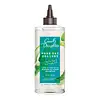What's inside
What's inside
 Key Ingredients
Key Ingredients

 Benefits
Benefits

 Concerns
Concerns

 Ingredients Side-by-side
Ingredients Side-by-side

Water
Skin ConditioningCoco-Glucoside
CleansingGlycerin
HumectantParfum
MaskingCitric Acid
BufferingSalicylic Acid
MaskingPotassium Hydroxide
BufferingLinalool
PerfumingHydroxypropyl Guar Hydroxypropyltrimonium Chloride
Aloe Barbadensis Leaf Juice
Skin ConditioningLimonene
PerfumingGeraniol
PerfumingCitral
PerfumingPotassium Sorbate
PreservativeSodium Benzoate
MaskingFish Oil
Skin ConditioningCeramide AP
Skin ConditioningDimethicone
EmollientDimethicone/Vinyl Dimethicone Crosspolymer
Skin ConditioningWater
Skin ConditioningPolyglyceryl-2 Triisostearate
EmulsifyingCetyl PEG/PPG-10/1 Dimethicone
EmulsifyingIsododecane
EmollientButylene Glycol
HumectantVinyl Dimethicone/Methicone Silsesquioxane Crosspolymer
CI 77491
Cosmetic ColorantDimethicone Crosspolymer
Emulsion StabilisingCI 15985
Cosmetic ColorantCI 77891
Cosmetic ColorantCI 15850
Cosmetic ColorantCI 19140
Cosmetic ColorantPEG-60 Hydrogenated Castor Oil
EmulsifyingCeramide AP
Skin Conditioning1,2-Hexanediol
Skin ConditioningVp/Hexadecene Copolymer
Disteardimonium Hectorite
StabilisingCI 77499
Cosmetic ColorantPhenoxyethanol
PreservativePropylene Carbonate
SolventParfum
MaskingCI 45410
Cosmetic ColorantAluminum Hydroxide
EmollientCI 42090
Cosmetic ColorantDimethicone, Dimethicone/Vinyl Dimethicone Crosspolymer, Water, Polyglyceryl-2 Triisostearate, Cetyl PEG/PPG-10/1 Dimethicone, Isododecane, Butylene Glycol, Vinyl Dimethicone/Methicone Silsesquioxane Crosspolymer, CI 77491, Dimethicone Crosspolymer, CI 15985, CI 77891, CI 15850, CI 19140, PEG-60 Hydrogenated Castor Oil, Ceramide AP, 1,2-Hexanediol, Vp/Hexadecene Copolymer, Disteardimonium Hectorite, CI 77499, Phenoxyethanol, Propylene Carbonate, Parfum, CI 45410, Aluminum Hydroxide, CI 42090
 Reviews
Reviews

Ingredients Explained
These ingredients are found in both products.
Ingredients higher up in an ingredient list are typically present in a larger amount.
Ceramide AP is formally known as Ceramide 6.
Ceramides are intercellular lipids naturally found in our skin that bonds dead skin cells together to create a barrier. Having a strong skin barrier leads to more firm and hydrated skin.
They are known for their ability to hold water and thus are a great ingredient for dry skin. By bolstering the skin ceramides act as a barrier against irritating ingredients. This can help with inflammation as well.
If you would like to eat ceramides, sweet potatoes contain a small amount.
Read more about other common types of ceramides here:
Ceramide NP
Ceramide EOP
Parfum is a catch-all term for an ingredient or more that is used to give a scent to products.
Also called "fragrance", this ingredient can be a blend of hundreds of chemicals or plant oils. This means every product with "fragrance" or "parfum" in the ingredients list is a different mixture.
For instance, Habanolide is a proprietary trade name for a specific aroma chemical. When used as a fragrance ingredient in cosmetics, most aroma chemicals fall under the broad labeling category of “FRAGRANCE” or “PARFUM” according to EU and US regulations.
The term 'parfum' or 'fragrance' is not regulated in many countries. In many cases, it is up to the brand to define this term.
For instance, many brands choose to label themselves as "fragrance-free" because they are not using synthetic fragrances. However, their products may still contain ingredients such as essential oils that are considered a fragrance by INCI standards.
One example is Calendula flower extract. Calendula is an essential oil that still imparts a scent or 'fragrance'.
Depending on the blend, the ingredients in the mixture can cause allergies and sensitivities on the skin. Some ingredients that are known EU allergens include linalool and citronellol.
Parfum can also be used to mask or cover an unpleasant scent.
The bottom line is: not all fragrances/parfum/ingredients are created equally. If you are worried about fragrances, we recommend taking a closer look at an ingredient. And of course, we always recommend speaking with a professional.
Learn more about ParfumWater. It's the most common cosmetic ingredient of all. You'll usually see it at the top of ingredient lists, meaning that it makes up the largest part of the product.
So why is it so popular? Water most often acts as a solvent - this means that it helps dissolve other ingredients into the formulation.
You'll also recognize water as that liquid we all need to stay alive. If you see this, drink a glass of water. Stay hydrated!
Learn more about Water